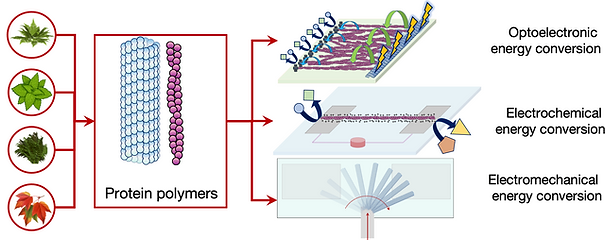
RESEARCH THEMES
Quantum Biotechnology
for Developing Therapeutic Interventions

Quantum mechanical effects, previously thought to be irrelevant in biological systems, are now thought to play crucial roles in the magnetic-field based navigation of migratory birds, turtles and moths (Hore and Mouritsen, 2016). If quantum effects can indeed play functionally relevant roles inside these biological systems, then can we harness them to develop paradigms for disease diagnosis and treatment?
Using time-resolved fluorescence spectroscopy, computational tools and In Vitro biochemistry, we aspire to understand how earth-abundant proteins can be put to use for both diagnostic and therapeutic applications. Ultimately, our work will enhance the development a new genre of 'quantum biomedical' tools for disease detection and treatment.
Quantum Bioengineering for Disease Diagnosis

In the context of biochemistry, the quantum advantage is the increased generation rate of product species in a chemical reaction by implementing quantum effects. Examples of such increased reaction rates include thermally activated quantum tunneling of electrons to enhance enzymatic reaction rates and quantum coherent electronic energy transfer during photosynthesis. Can we harness this quantum chemical advantage, already seen in such biological systems, to fabricate new bio-inspired nanotechnological devices? Our group is focused on developing quantum biosensing paradigms that can transduce quantum chemical information in human physiological systems into electronic and photochemical cues.
Building a dielectric map of the cell

The biological cell has been known to interact with electromagnetic stimuli for centuries. Although progress is encouraging (see this book), we are still far from building a precise map to understand how electric fields and magnetic fields interact with various parts of the cell.
Using techniques from impedance spectroscopy, In Vitro biophysics and fluorescence microscopy, we seek to understand the electrical basis of the cell. As biophysicists, we aim to understand how electromagnetic stimuli influence various intracellular targets with special emphasis on proteins. Also as engineers, we then use our understanding to optimize disease-treatment using electromagnetic stimuli. Our present interests are centred around understanding the electromagnetic properties of proteins polymers of tubulin and actin, microtubules and actin filaments respectively (see previous work in Kalra et al., 2023a; Kalra et al., 2020).